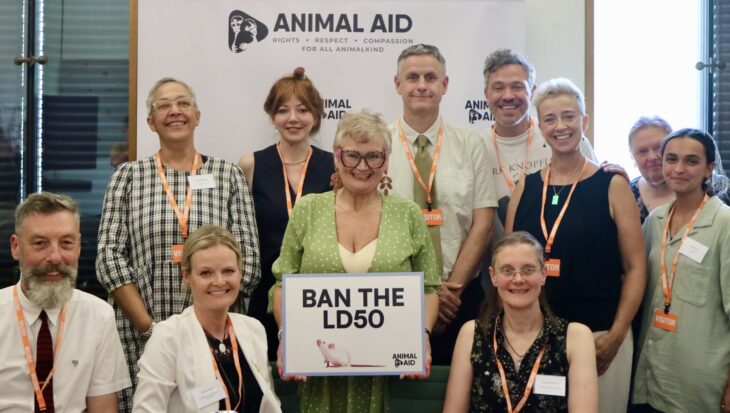The Grand National has a horse fatality rate more than five times higher than other jump races in Britain, according to the BHA1. Since 2000, 11 horses have perished during the event and a further 11 while running in other races on the Grand National course. Two horses were killed in the 2012 event: the favourite Synchronised, and According to Pete. This followed the deaths of Dooneys Gate and Ornais in 2011.
The BHA and Aintree Racecourse have refused to modify the size or nature of the course’s most lethal obstacle, Becher’s Brook, which played a significant part in the deaths of three of the four horses in the 2011 and 2012 events. Both Animal Aid and the RSPCA’s Chief Executive, Gavin Grant, have called for this fence to be removed.
According to the BHA, the design and solid core structure of the fences on the course are set to remain for the time being, while the distance of the race will decrease by a tiny amount. Shockingly, the BHA report states that the huge field of 40 runners is acceptable to ‘maintain the safety factor’. Crowding was a significant element in the death of Dooneys Gate in the melee at Becher’s Brook in 2011.
Public support for the Grand National has declined significantly in recent years, according to NOP opinion polls commissioned by Animal Aid. Most people who expressed a clear opinion in April 2012 said that the race is cruel. In an equivalent 2003 poll, most people thought that the race was not cruel.
And at parliamentary level, Adrian Sanders MP has tabled a House of Commons Early Day Motion (EDM 432), calling on the government to introduce a Code of Practice under the Animal Welfare Act (2006) that would set minimum standards for all race meetings in Britain.
Says Animal Aid’s Horseracing Consultant Dene Stansall:
‘Yet again, the BHA has reluctantly offered up a meagre list of modifications that fail even to acknowledge the lethal nature of this race. They amount to little more than a cynical whitewash. The BHA refuses to acknowledge that the Becher’s Brook fence was instrumental in the deaths of three of the four victims over the past two years. it remains the race’s most lethal obstacle and must be removed. And it is time for the BHA to be stripped of its self-regulatory role. The government has to intervene to protect the welfare of the horses who are forced to compete in this appalling race.’
Animal Aid’s Grand National Factsheet sets out why the event is so lethal to horses – pointing to key hazards and describing changes made to the course over the past 173 years.
More information
- Contact Dene Stansall on 01732 364 546
Notes to Editors
1. The BHA’s website notes that the average National Hunt fatality rate is around four per 1,000 runners, whereas the Grand National’s is 23 per 1,000 runners.

